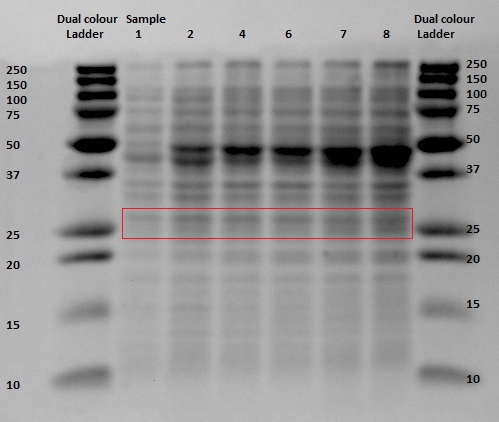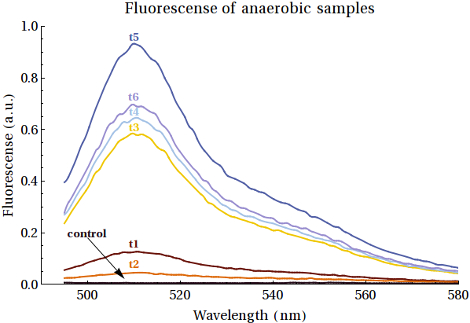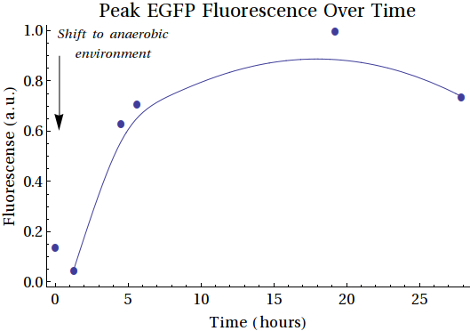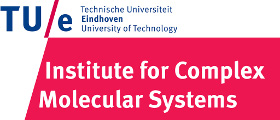Team:TU-Eindhoven/Results
From 2013.igem.org



Contents |
Main Results
Aerobic Expression
In the experiments for the aerobic expression of the proteins, we saw that we were able to produce a number of proteins correctly. The proteins 1ETF, 1PJN, 1G70 and EGFP were visibly produced and purified by means of their His-Tag and/or exclusion body extraction. The other proteins we had designed were not seen as clearly, many not all, after expression, however, for most of these proteins, we did end up seeing CEST contrast. We can conclude that the following Biobricks were expressed most succesfully: [http://parts.igem.org/Part:BBa_K1123014 BBa_K11230014], [http://parts.igem.org/Part:BBa_K1123015 BBa_K1123015], [http://parts.igem.org/Part:BBa_K1123016 BBa_K1123016] and [http://parts.igem.org/Part:BBa_K1123017 BBa_K1123017]. For more detailed information and further results obtained during these experiments, see CEST Agent Testing.
CEST Agent Testing
To evaluate all the potential CEST contrast agents, MRI measurements were carried out and analyzed as described in MRI Data Processing. The most promising agents seemed to be the lysine based contrast agents. All compounds that have a high lysine percentage expressed lysine based CEST contrast. The best distinguishable agent was 1PJN ([http://parts.igem.org/Part:BBa_K1123015 BBa_K1123015]), based on the graph below ().

Anaerobic FNR Testing
After analyzing the samples taken during anaerobically induced expression of EGFP, we can conclude that the FNR promoter is a functional Biobrick. This conclusion was made after viewing the understanding gels and noticing the increased intensity of the bands related to the EGFP protein.


We performed fluorescence measurements of the samples taken at different time points during the anaerobically induced expression of EGFP. These can be viewed below.


General Result
As a general result of all the experiments, we have obtained a promising CEST contrast agent alongside a functional FNR promoter, which can be induced anaerobically at 37°C. When exposed to hypoxic conditions for longer periods of time we also notice an increase in the amount of protein being produced, as we would expect. Overall, we showed that all the separate mechanisms are working correctly and that a combined construct is still functional. This proof of concept is promising, but further experiments, such as in vivo experiments and experiments to ensure the killing mechanism works, need to be performed to say whether this could really be used for tumor targeting within the human body.
 "
"



